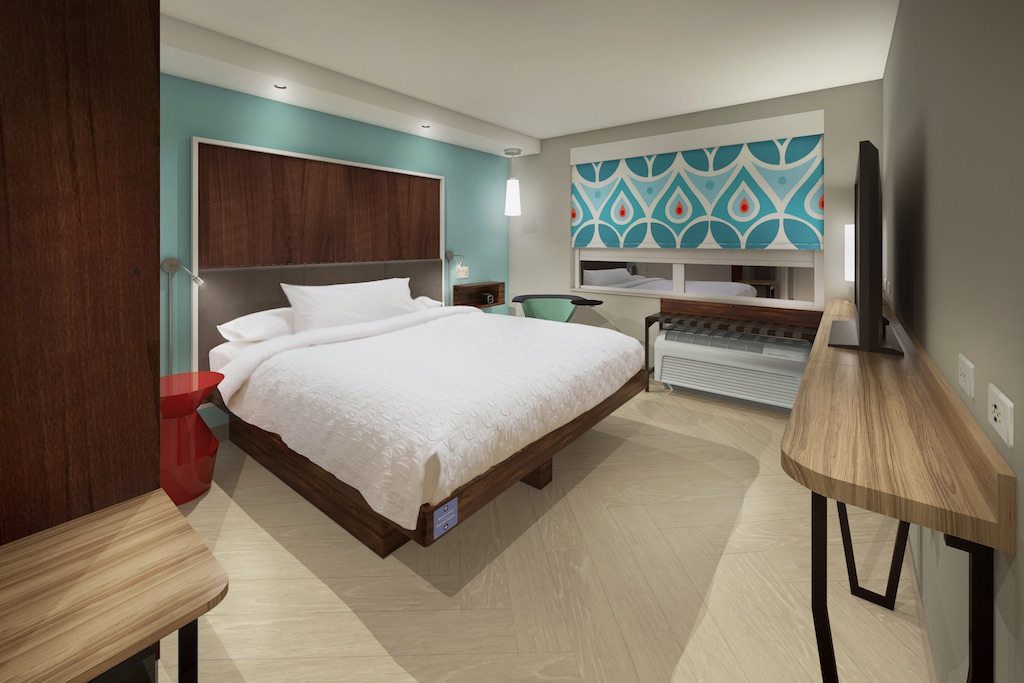Skift Take
Fresh off of its spinoffs and investment from its new major stakeholder, HNA, Hilton seems poised to take the asset-light hotel management model and run with it.
In its first quarter as a fully asset-light company following a spinoff of its real estate and timeshare businesses in January, Hilton recorded better-than-expected profits in the first quarter, and raised its expectations for the year ahead, thanks to strength in both leisure and corporate transient travel.
The slight boost in corporate travel during the first quarter is somewhat significant, not withstanding the fact that January is generally a slow month for hotel bookings across the board.
Although the hotel industry saw relatively low demand for corporate transient travel, which is business travel excluding groups and meetings, for most of 2016, it did see a slight uptick following the results of the U.S. Presidential election. And Hilton CEO Christopher Nassetta expressed optimism for that sector of the business earlier this year.
“Broadly, in American CEOs, there’s a more optimistic view,” Nassetta said in January. “We do see the early telltale signs that corporate America is becoming more optimistic and they’re starting to make decisions to spend more money as a consequence of that optimism.”
While he’s tempered some of his earlier enthusiasm from January, Nassetta remained confident that “there’s potential to see further pick up” because of some possible GDP growth and business-friendly tax reforms. Nassetta also said Hilton saw better than expected performance from group bookings in the first quarter.
“There’s a bit of reason for optimism, but ultimately time will tell,” Nassetta said while speaking to financial analysts Tuesday. “It’s still early in the year and early in the Trump administration and early in his agenda.”
When asked if Trump’s two travel bans had an impact on Hilton’s U.S. business in the first quarter, Nassetta said that revenue from international inbound travel “was actually up a bit, or flat to up about 1 percent.” While business was up from Canada and Asia-Pacific, numbers from Mexico and the Middle East were down.
However, Nassetta said he suspected the strength of the dollar, coupled with the relative weakness of the pound, may have played a role and boosted Hilton’s performance, especially in Europe.
Hilton’s Strategy Going Forward
As for the company’s future strategies, Nassetta said the company remains committed to achieving a true “network effect,” something he’s previously described as the ability to “serve any customer for any need they have, anywhere in the world they want to be.”
When asked if Hilton has achieved that network effect, Nassetta said no, it had not, and that the company has room to grow in many regions around the world.
“We’re at the tip of our iceberg for international growth,” he said.
In addition to building up that network effect, the company remains committed to building its existing brands and launching at least five new brands, one of which, Tapestry Collection by Hilton, debuted in January. Nassetta said the company already has 60 Tapestry properties signed or in various negotiations and the first property is expected to open by the second quarter.
“Besides having the purest [brand] portfolio in the business, each of our brands is the leader or category killer in its segment,” Nassetta said. “There are no dogs in the bunch.”
By May, the first Tru by Hilton is expected to open, and nine more properties are scheduled to open this year, with more than 60 set to open in 2018. The limited-service sector, in particular, Nassetta noted, is where everyone in the hotel industry is investing because the “economics support it.”
Additionally, Hilton reported that its efforts to drive more direct bookings and increase loyalty membership also appear to be working. Web-direct business accounted for 30 percent of Hilton’s bookings in the first quarter, “the highest level ever,” according to Nassetta, and is now the “fastest-growing channel, up 200 basis points, year over year.”
In the first quarter, membership in Hilton’s newly revamped Hilton Honors loyalty program was 63 million, up 19 percent year over year, and those members accounted for 57 percent of occupancy.
Nassetta noted, “There’s a huge amount of opportunity still left there to continue to take a 30 percent online business and grow it to a much higher share of our business.”
Hilton’s First Quarter Earnings
System-wide revenue per available room (RevPAR), a metric often used by the hotel industry to measure performance, was up 3 percent compared to the first quarter of 2016. Net profits were $75 million, representing about a third of what the company reported in the first quarter of 2016, primarily because of the spinoffs. Diluted adjusted earnings per share were 38 cents, beating Wall Street’s expectations of 28 cents per share.
Nassetta said the company is raising its adjusted earnings before interest, tax, depreciation, and amortization (EBITDA) for the full year of 2017 to a range of $1.86 billion to $1.9 billion, an increase of $20 million at the midpoint. He also said the company was “on track to deliver 6.5 percent net unit growth” and that “2017 will be another record year for construction starts, openings, and net unit growth.”
The company, which currently has more than 812,000 rooms spread out over 103 countries worldwide across 14 brands, has an additional 325,000 rooms in its construction pipeline. Nassetta also noted that “all brand segments are at record pipelines.”
In March, HNA’s closed on its acquisition of 82.5 million Hilton shares from Blackstone, representing a 25 percent stake in the company.
Have a confidential tip for Skift? Get in touch
Photo credit: A rendering of a guest room of a Tru by Hilton hotel. Hilton expects to open its first Tru by Hilton property by this year. Hilton
